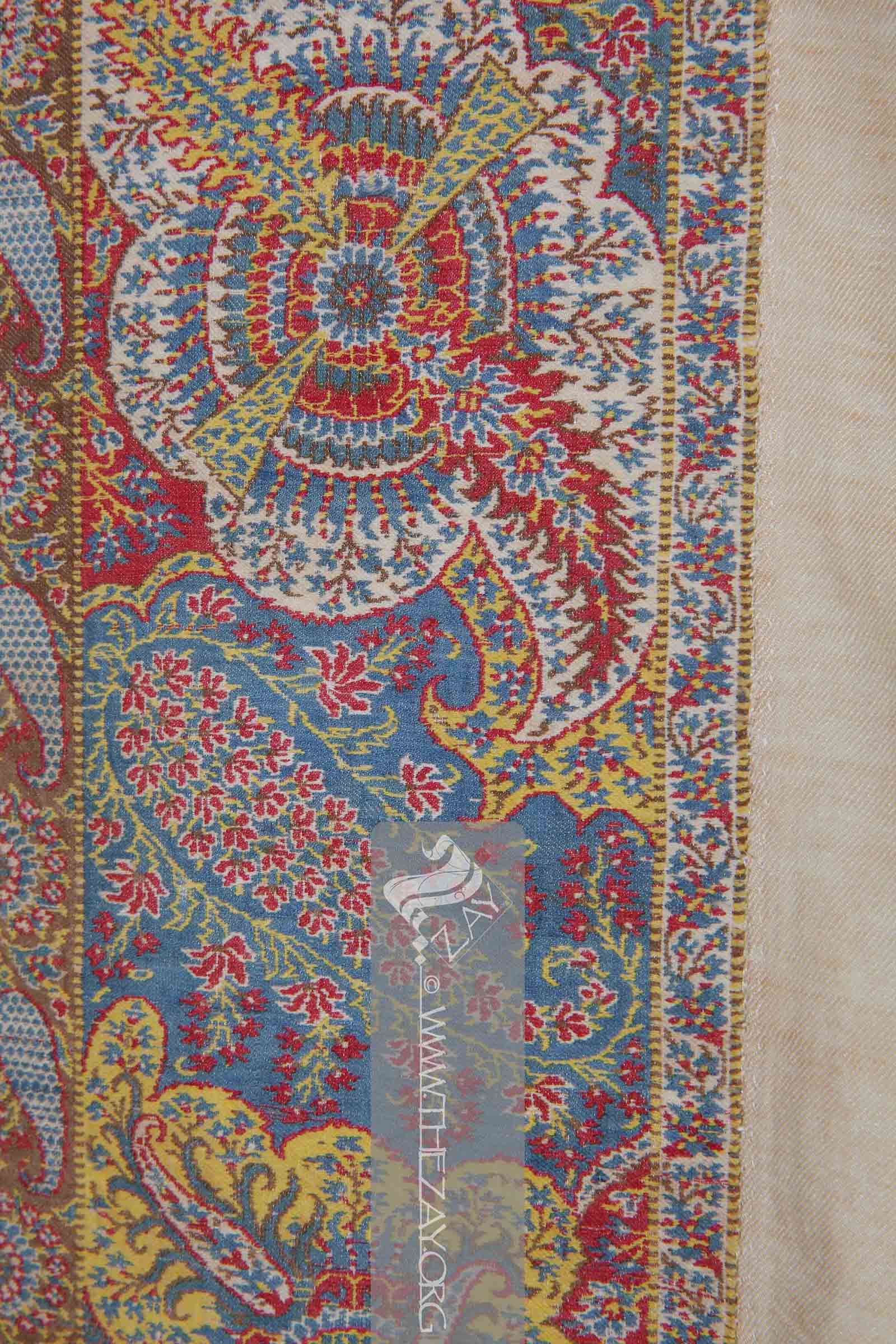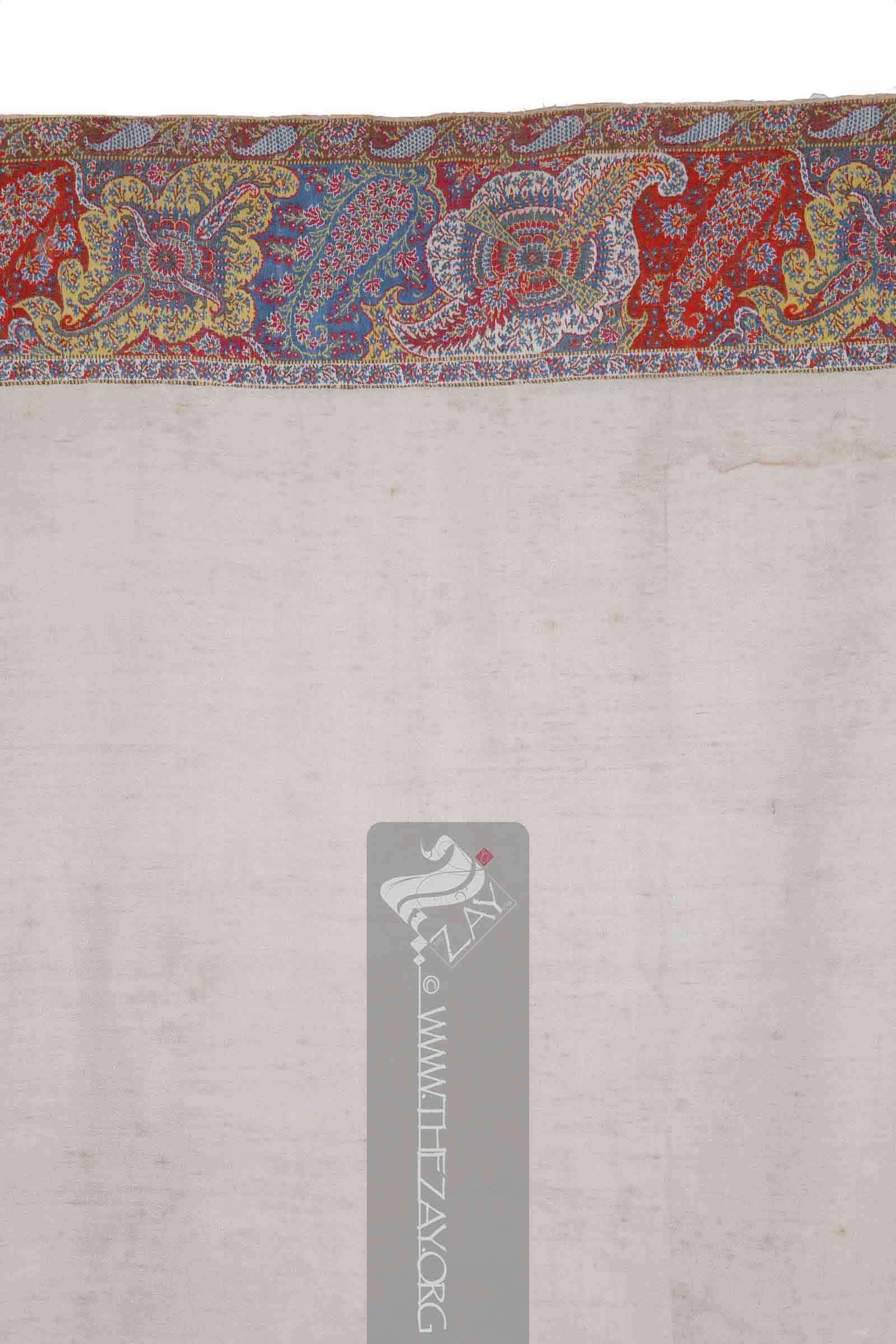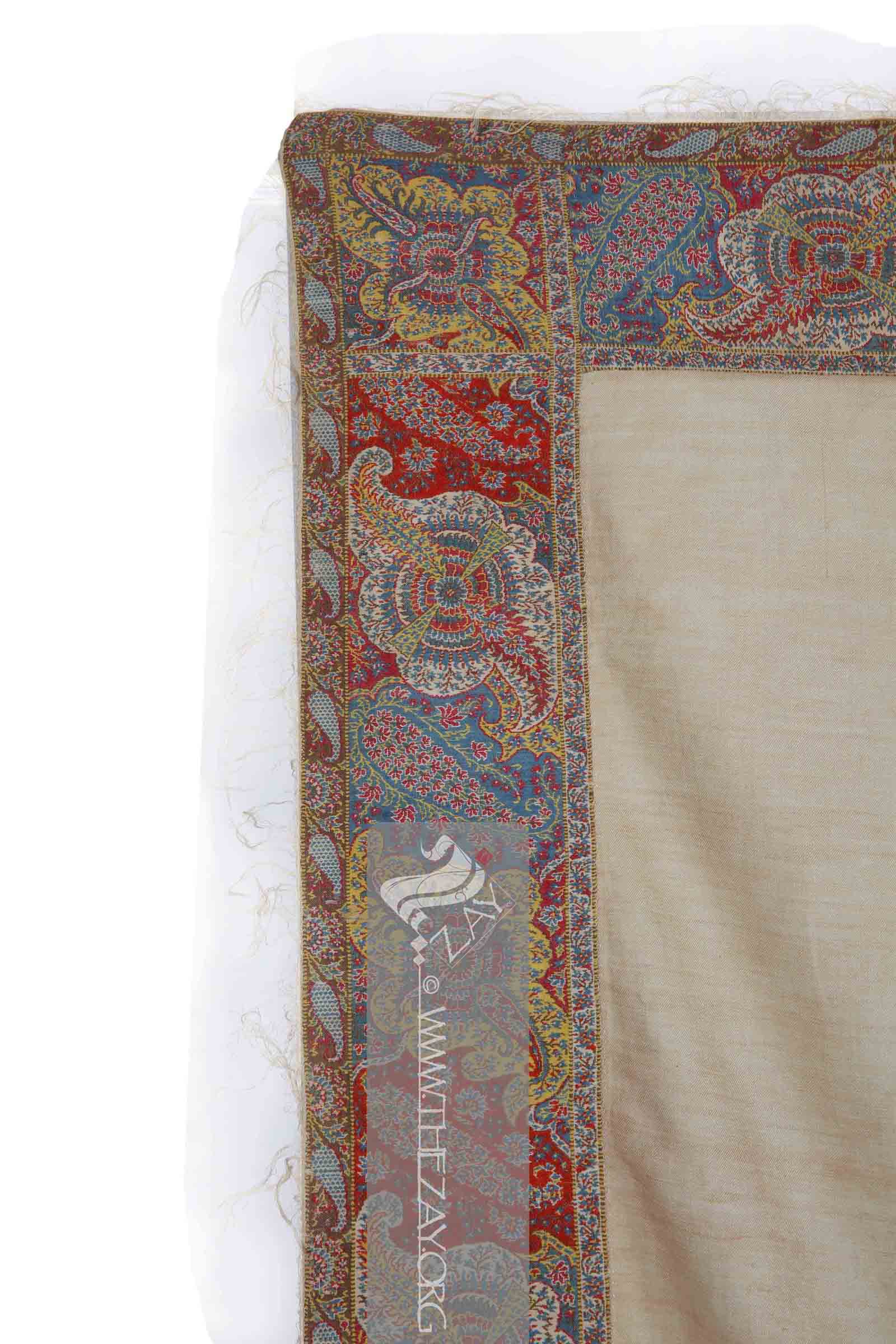Object History This delicate silk
scarf
Scarf: (English), usually a rectangular piece of cloth loosely worn over the shoulders, upper body and arms, and sometimes also over the head. dates back to the early-19th century and was originally a part of the Dr Joan Coleman Collection. It was first purchased at an auction in Christie’s, London, and later The
Zay
Zay: (Arabic: costume, Pl. azyaā’), a set of clothes in a style typical of a particular country or historical period. Initiative managed to acquire it from Kerry Taylor Auctions in 2020.
Dr Joan Coleman began collecting shawls in 1976 and developed her lifelong passion for collecting. She was a regular at the London salerooms of Christie’s, Sotheby’s, and Phillips – three of the most outstanding auction houses of the period in the world – getting to know the dealers and learning in the process. She acquired vast knowledge and dedicated hours carefully cataloguing her ever-growing collection. She intended to loan her collection to different museums and institutions for the benefit of learning and education. Her collection is one of the largest and the finest private
shawl
Shawl: (Persian: shāl from Hindi: duśālā – Shoulder Mantle), a shawl is a South Asian version of a scarf worn or wrapped loosely over the shoulders and is usually made of wool. collections to have ever graced the world with shawls ranging from Kashmir,
Paisley
Paisley: (Scottish Gaelic, Pàislig: a town in Scotland), often called buta, boteh, amli, or kalgi in the subcontinent and kazuwah in Arabic, is a Persian tear drop motif with a curved end specially in textiles. Its popularity and subsequent local production in 18th century at Paisley are responsible for its nomenclature., Edinburgh, Norwich, France, and Iran.
Object Features This is an almost square piece of ivory silk fabric with a polychromatic woven scroll border running along its four edges. The border has
paisley
Paisley: (Scottish Gaelic, Pàislig: a town in Scotland), often called buta, boteh, amli, or kalgi in the subcontinent and kazuwah in Arabic, is a Persian tear drop motif with a curved end specially in textiles. Its popularity and subsequent local production in 18th century at Paisley are responsible for its nomenclature. and floral motifs in vivid colours ranging from several shades of
coral
Coral: (Greek: korallion, probably from Hebrew: goral – small pebbles), is a pale to medium shade of pink with orange or peach undertones, resembling the colour of certain species of coral. to blue and yellow. It is almost a square piece – a
scarf
Scarf: (English), usually a rectangular piece of cloth loosely worn over the shoulders, upper body and arms, and sometimes also over the head. – possibly used to cover the head.
Although long shawls were fashionable at the beginning of the 19th century by the middle of the century, wider skirts in European fashion encouraged larger square shawls with borders and grouped designs which encroached into the centres. Skillful needlework and stitching arranged borders for one corner to be folded diagonally to fit into the opposite side, thus making a V shape on the back of the wearer.
Made of silk
satin
Sātin: (Arabic: Zaytuni: from Chinese port of Zayton in Quanzhou province where it was exported from and acquired by Arab merchants), one of the three basic types of woven fabric with a glossy top surface and a dull back. Originated in China and was fundamentally woven in silk. possibly from silk produced from the larvae of Antheraea (
tussar
Tūssār: (Sanskrit: tasara – shuttle), produced from larvae of several species of silkworms belonging to the moth genus Antheraea. They live and sustain themselves in the wild forests with trees belonging to Terminalia, Shorea robusta , and other food plants native to South Asia.), the only embellishment this
scarf
Scarf: (English), usually a rectangular piece of cloth loosely worn over the shoulders, upper body and arms, and sometimes also over the head. offers are its intricately designed borders. The borders are woven on a
jacquard
Jacquard: (After Joseph M Jacquard a French weaver and inventor), is referred to both an apparatus with perforated cards invented by the aforementioned Joseph M Jacquard in 1804 fitted to a loom enabling complex intricate weaving patterns and the brocaded fabric woven on a jacquard loom. loom in
satin
Sātin: (Arabic: Zaytuni: from Chinese port of Zayton in Quanzhou province where it was exported from and acquired by Arab merchants), one of the three basic types of woven fabric with a glossy top surface and a dull back. Originated in China and was fundamentally woven in silk. and wool and then stitched to the base fabric. The floral and
paisley
Paisley: (Scottish Gaelic, Pàislig: a town in Scotland), often called buta, boteh, amli, or kalgi in the subcontinent and kazuwah in Arabic, is a Persian tear drop motif with a curved end specially in textiles. Its popularity and subsequent local production in 18th century at Paisley are responsible for its nomenclature. motifs in ornate style are evidence of the
Oriental
Oriental: (Latin and Late Middle English Adjective: orientalis – From Orient; from Latin (noun): oriri – to rise; and oriors – East), anything of an Eastern origin in relationship to Europe – Asia. The word was first used in the context of territorialization between the late 3rd and early 4th Century CE. influence in Europe, especially in Great Britain. However, the colours of threads used reflect a very European aesthetic. The embroidery is done by hand in various shades of red, bright yellow, and (
cobalt_blue
Cobalt Blue: (CoAl2O4), a blue pigment made by sintering Cobalt Oxide (CoO) with Aluminium Oxide (Al3O2) forming cobalt aluminate (CoAl2O4). It has long been used in Chinese porcelain in its impure form for centuries, however, the first mention of cobalt as a colour in English was in 1777 CE. ) is evidence of the same.
Links: 







